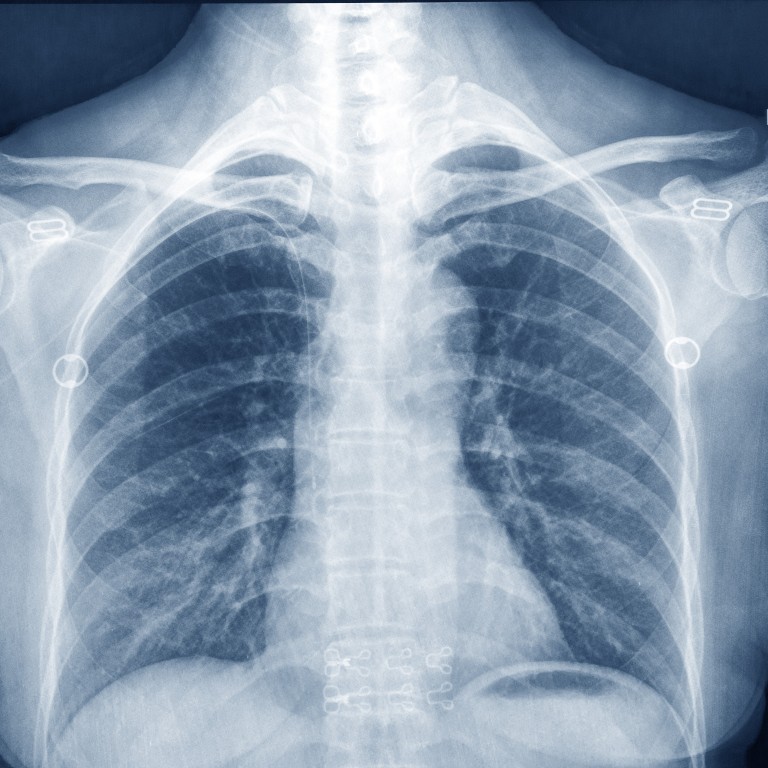
X-ray study on elderly coronavirus patients could pave way for accessible and inexpensive treatment: researchers
- Study of 10 patients by Atlanta university found radiation therapy resulted in shorter hospital stays, better intubation rates and improved lung condition
- Chinese radiation medicine professor says X-ray may be a remedy of last resort in some cases but there is no evidence it is justified for mass treatment
Ten Covid-19 patients who volunteered to have radiation therapy sent through their chests recovered much faster than those without, the researchers found.
The X-ray could be a “well-tolerated, inexpensive, and globally available Covid-19 treatment”, said the research team from Emory University in Atlanta, in a non-peer-reviewed paper posted on Medrxiv.org on Tuesday.
The median time of clinical recovery after the radiation therapy was three days, just a quarter of the time of those taking more common treatments, such as remdesivir and hydroxychloroquine.
The volunteers’ median age was 78, ranging from 43 to 104 years old. All of them were on ventilators with declining conditions. Most – 70 per cent – were African Americans.
“Suppose that we hit the body with a tremendous, whether it is ultraviolet or just very powerful light,” Trump said in a briefing to the nation on the lawn of the White House.
“Supposing you brought the light inside the body, which you can do either through the skin or in some other way.”
Coronavirus science latest: vaccines, treatments, reinfection and research
Despite the coincidence of timing, Dr Mohammad Khan, the co-leader of the study, said his trial had nothing to do with Donald Trump or his statements.
“[I am] not exactly sure what he was referring to,” he said.
“X-rays are not exactly the same thing. I guess if he had said more powerful energy, beyond the light wave spectrum, or the UV spectrum, then that would be a better quantification of X-rays,” he said, adding he could not rule out the possibility that Trump's remark also included X-rays.
The beam did not kill the virus, however, as the US president suggested. Instead, it suppressed the activities of some immune cells, according to the researchers.
A growing amount of evidence from across the world has suggested that most Covid-19 victims were probably not killed by the virus itself, but by an overblown immune response that caused severe damage to healthy tissues.
Khan’s study found the therapy could lead to other improvements when compared with the group of control patients not receiving X-ray treatment, such as a shorter hospital stay (median 12 vs 20 days), freedom from intubation (90 per cent vs 60 per cent) and improved lung conditions. Not all these results were statistically significant because of the small sample size.
“We are now moved towards a phase 3 [trial] that I have opened with plans to treat many more patients,” Khan said.
The dose of radiation received by each patient’s lungs was 1.5 Gray, a measurement of radiation dose. Although this energy intensity was only a fraction of those used in cancer therapies, it was about 1,000 times stronger than the exposure in typical X-ray imaging, and way above the safety limit for professionals working in radioactive environments (about 0.02 Gray).
One patient required high-flow oxygen support after the treatment, developed systemic blood clotting, had heart and kidney abnormalities and died 15 days after the radiation. Another patient had mild nausea, according to the researchers.
China adds long-term organ damage to effects of Covid-19
Tu Yu, a professor with the School of Radiation Medicine and Protection at Soochow University in Jiangsu province, said he and his colleagues were following the study in the US.
China no longer had enough Covid-19 patients for these experiments, but it would need as many solutions as possible to combat a possible return of infections.
Tu said Khan’s paper presented some “interesting cases”, but the evidence so far was not strong enough to support large-scale clinical use of X-ray treatment.
“In some extreme occasions, when patients are dying and there are no other options, radiation therapy may give them a chance to live,” he said.
“But for application on the mass population, the potential risk of radiation requires thorough investigation.”

